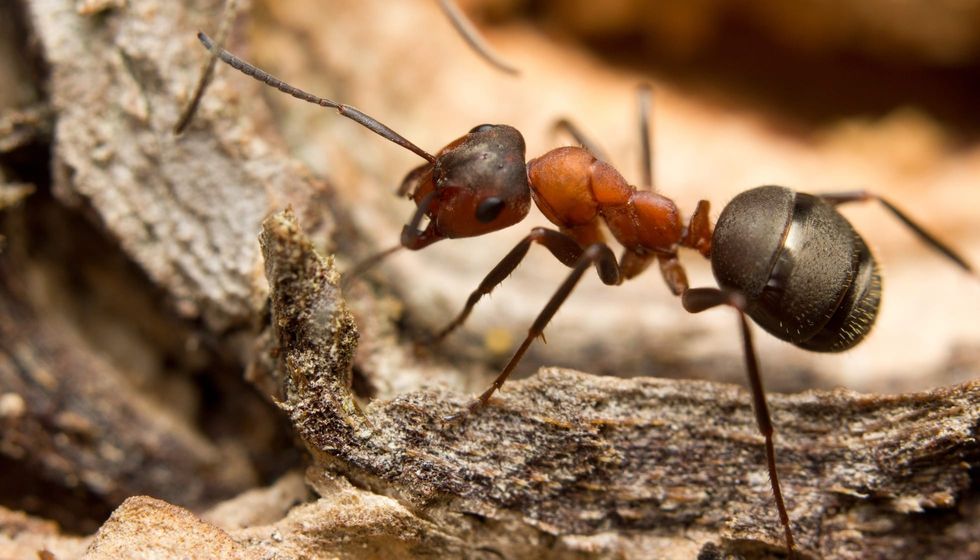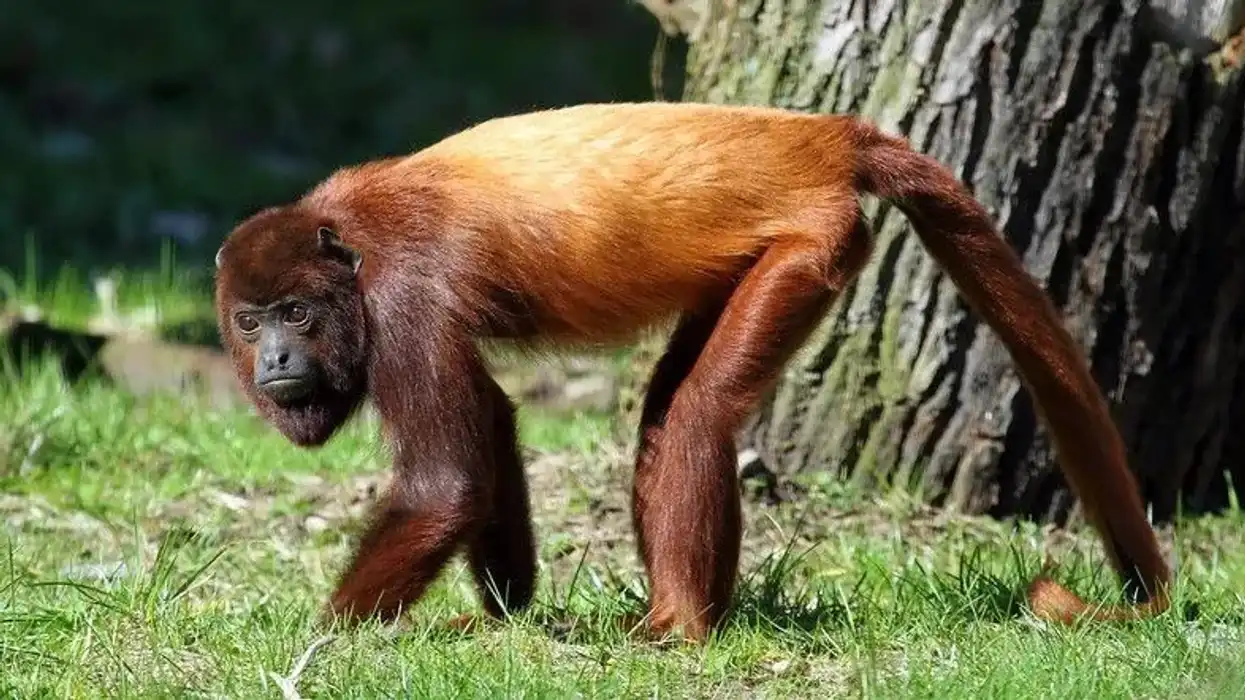Ouch! Was that an ant bite or are you itching to learn more about them? Find everything you need to know about a special species of ants in this article.
Red wood ants, also known as southern wood ants, are a species of wood ants belonging to the Formicidae family. The red wood ant distribution occurs in Europe, North America, and Anatolia.
This species of wood ants can spray formic acid from their stomachs to defend themselves from any threats. This self-defense mechanism was discovered by John Ray, a British naturalist in 1671. He conducted experiments on the species by distilling several crushed wood ants belonging to the Formica rufa group.
Later, its scientific name Formica rufa was given to the species by Carl Linnaeus, a Swedish zoologist and taxonomist in 1761. The name was inspired by the formic acid present in them.
Wood ants of this species usually build their nests in places that receive abundant sunlight. The nests are often built on old and fallen tree barks as the wood is moist and easy to build into.
They also build dome-shaped nests called an anthill. An anthill can be a small mound or a large soil-mud pile with a complex structure, underground tunnels ,and up to 78.7 in (2 m) wide and deep into the ground.
An ant colony consists of 'worker ants' and only they build the ant nests from scratch.
They build their nests by digging into the ground, piling mud, giving structure to the nest, constructing tunnels, and everything in between. Besides soil, various other materials such as conifer needles, twigs, leaves, small stones, pebbles, and even moss are incorporated into a nest.
Wood ants from the Formica rufa group are significant ecologically because they help maintain the balance of our ecosystem. If you liked reading about red wood ants, learn more about some other arthropods by reading about the leafcutter ant and wood tick.
Red Wood Ant Interesting Facts
What type of animal is a red wood ant?
The red wood (Formica rufa) ant is an insect, belonging to the wood ant species.
What class of animal does a red wood ant belong to?
The red wood ant belongs to the Insecta class of the Animalia kingdom.
How many red wood ants are there in the world?
Accurate data about their population size does not exist, but the species is classified as Near Threatened.
Where do they live?
The red wood ant range encompasses Europe, Anatolia and North America.
What is a red wood ant's habitat?
The red wood ant habitat includes woodlands, coniferous forests, and deciduous forests. There are two important features these ants need in their habitat which include a spot that receives sunlight in abundance and also somewhere that is moist.
Who do they live with?
Red wood ants live in groups called as colonies. They take shelter in nests or anthills.
How long do red wood ants live?
The queen ant can live up to 10 years. Female worker ants live up to seven years and male ants die shortly after mating.
How do they reproduce?
Red wood ants (Formica rufa) are polygamous and have multiple mating partners. Male workers often mate with readopted queens and other female ants from their mother colony.
This results in each colony in a nest having approximately 110 egg producing female ants.
A nest or even a colony may have one or several queens, and once the virgin queen ants mate with a male ant, they fly away from their old nest and colonies to establish a new one. These actions carried out by queen ants are called nuptial flights.
They lay eggs in a new nest which hatch in a short period of two weeks. In the next two weeks, the hatched larvae begin developing into a pupate, and in about four to six weeks the larvae complete their development and emerge as adult ants.
The queen during this process is often fed with ant's milk. It is considered to have high nutritional value and is good for the development of the larvae.
After the queen has laid all her eggs in the new colony, she mates with another male ant before shedding her wings.
She then remains in the same colony for the rest of her life and never leaves the nest. The larvae and the queens are fed by the workers.
What is their conservation status?
The IUNC Red List of Threatened Species has classified red wood ants as Near Threatened species.
Red wood ant (Formica rufa) nests and colonies have declined drastically over the past two decades.
Several factors such as destruction of anthills, changes in the food supply, habitat loss, shading by overgrowing shrubs, intensive agricultural activities carried out in areas near their nests, urbanization, recreational forests, and climate change are responsible for pushing this ant species on the verge of being endangered and ultimately extinct.
Red Wood Ant Fun Facts
What do red wood ants look like?
The red wood ant (Formica rufa) has six legs and each leg has a claw designed to grip and climb on things. A red wood ant also a large head, compound eyes similar to a house centipede, slightly curved antennae, a strong exoskeleton made of chitin, and large-powerful mandibles.
The species, like its name, suggests is red along with shades of black and brown. They are 0.1-0.3 in (4.5-9 mm) long.
The species body is divided into segments which are named the mesosoma, petiole, and gaster. Queen ants are much bigger than the worker ants and have wings until they are shedded after mating. Worker ants are significantly smaller in size.
The males have smaller bodies but bigger eyes and straight antennae. The smallest ants in a colony are the female workers.
How cute are they?
As ants are small, their physical features are challenging to observe with the naked eye. Close-up pictures show what the wood ant species truly look like, and they do not look cute at all!
How do they communicate?
Communication in this species of wood ants takes place via pheromones, touch, and sound. They sense the pheromones with their antennae which analyzes and provides information about the scent picked up by them such as which direction it's coming from.
Pheromones are generally used to make trails so that all the ants of a colony move and stay together. However, when an ant is in danger it emits an alerting pheromone to call all nearby ants to attack whatever threat is present there.
Information about various things is also passed through the entire colony with the help of pheromones. An ant remembers the scent of every other ant in its colony.
Ants have excellent communication and memory skills and are considered superorganisms because of it.
How big is a red wood ant?
These ants measure up to 0.1-0.3 in (4.5-9 mm). The wild boar is 200 times the size of a red wood ant.
How fast can a red wood ant fly?
Red wood ants can fly at an astonishing speed of 48.2 mph (30 kph).
How much does a red wood ant weigh?
Because they have such small bodies, a red wood ant weighs less than 1 oz (10 mg)
What are the male and female names of the species?
The males are called drones and the female ants are called queens.
What would you call a baby red wood ant?
A baby ant is called larva.
What do they eat?
All species of wood ants have similar diets and requirements, therefore competition between the members of various wood ant nests is quite fierce. They savagely fight for their respective ant colonies so that they have more food and land. The red wood ant diet includes mites, spiders, hoverflies, and beetles.
These insects make up about one-third of their diet. They primarily feed on aphid honeydew which makes up for two-thirds of their diet. Honeydew provides energy to the male and female workers.
Even though the species can release formic acid, predators like badgers prey on them.
Are they dangerous?
A single or a few ants are not dangerous. A bite from them will only leave a tingling sensation for a couple of minutes followed by some painless swelling. Getting attacked by an entire nest or colony may cause a lot of pain due to large amounts of formic acid being released.
Would they make a good pet?
Yes, ants make great pets and are easy to look after if you have an ant farm. However, this particular species of ants is Near Threatened and so it is best to leave these ants to live in the wild.
Did you know...
The small red wood ant (Formica polyctena) is a subspecies of red wood ants.
Honeydew is nothing but secretions of small sap-sucking insects called Aphids.
If you have a red wood ant problem in your house, to get rid of them simply spray some vinegar on the areas they invade. It's a quick way to kill them.
Horse ant is another common name given to the species.
What use do red wood ants have to humans?
These ants are important to humans as they help maintain the balance in our ecosystem as they turn and aerate the soil by improving the flow of oxygen underground by digging, preying on insects, and serving as food to other organisms as well. If we lost them, it would give rise to multiple problems.
Do wood ants have a queen?
Yes, they do have a queen and some colonies have multiple queens.
Here at Kidadl, we have carefully created lots of interesting family-friendly animal facts for everyone to discover! Learn more about some other arthropods from our wolf spider facts and purple emperor butterfly facts pages.
You can even occupy yourself at home by drawing one on our free and printable red wood ant coloring pages.










